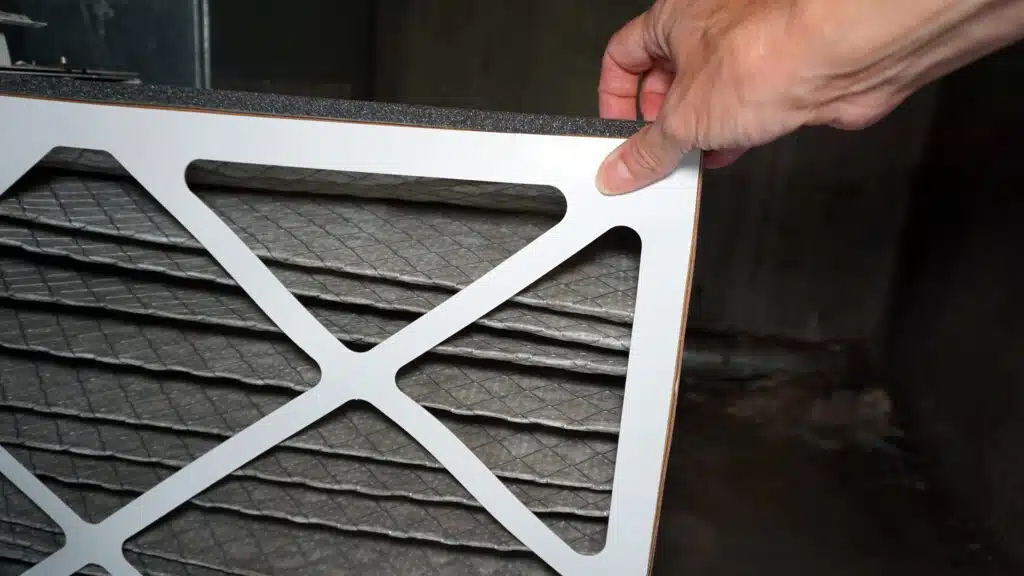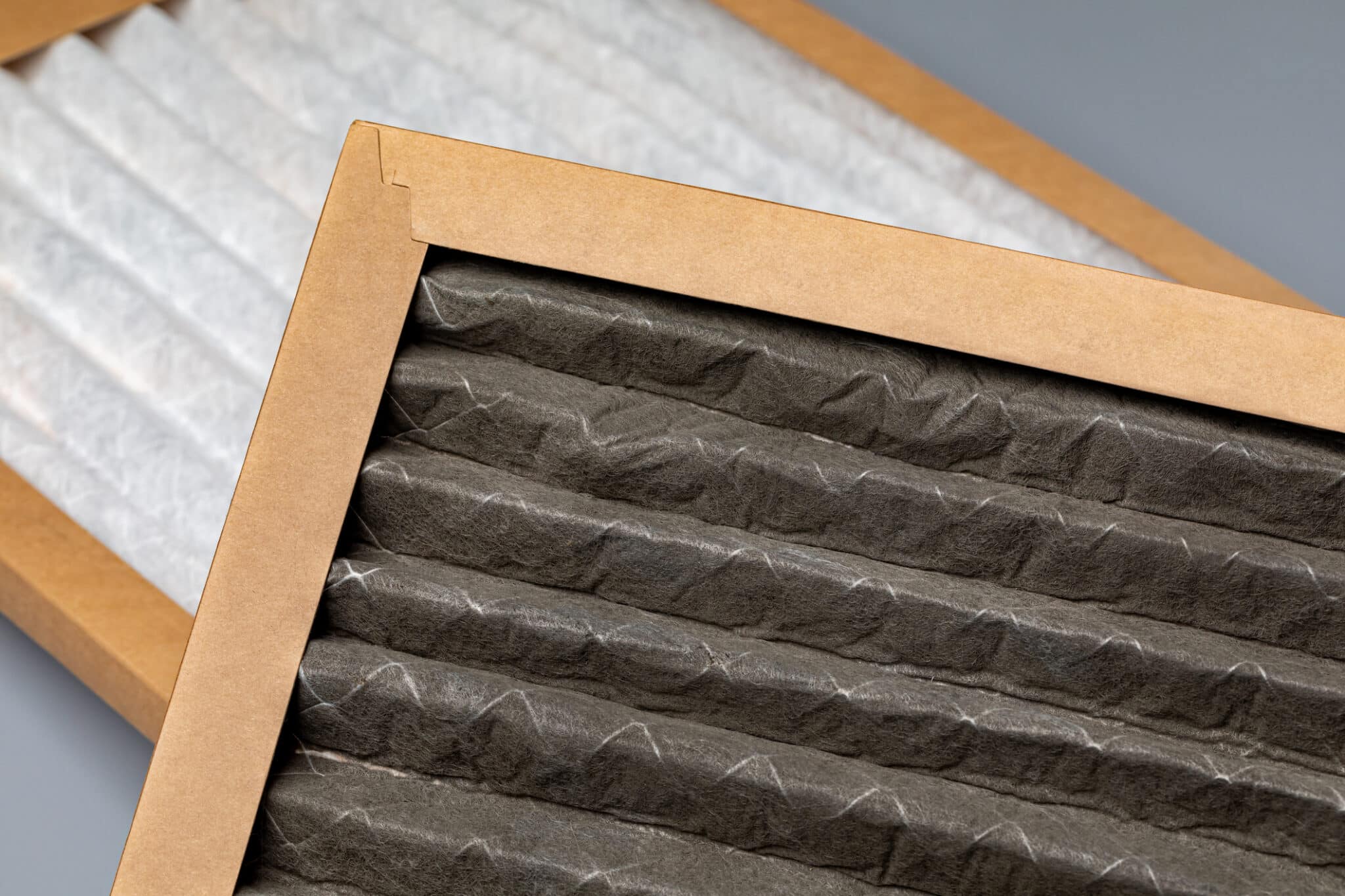
Texas HVAC Filter Maintenance Tips and Tricks
In Texas, where the weather swings from scorching summers to chilly winters, maintaining a Texas HVAC filter is crucial for keeping indoor air clean and your system running smoothly. Residents of Fort Worth, TX, understand the importance of regular filter checks. These not only enhance indoor air quality but also boost the efficiency of their heating and cooling systems. Given the state’s propensity for dust, allergens, and high pollen counts, a well-maintained HVAC filter is a line of defense for your home’s air quality.
Arlington, TX, homeowners, too, face similar challenges with fluctuating weather conditions affecting their indoor air. The key to ensuring comfort and performance of your HVAC system year-round lies in using filters rated for Texas’s unique air conditions. This means selecting filters that can handle everything from spring’s pollen onslaught to the fine dust of dry summer days. By choosing the right Texas HVAC filter, you’re taking a significant step towards cleaner air at home.
Routine replacements of your Texas HVAC filter are not just a recommendation; they’re a necessity for maintaining optimal air quality and system efficiency. Especially during seasons with high pollen or dust levels, frequent checks become even more critical. This practice helps in identifying when a filter is due for a change, ensuring that air flowing through your home is as clean as possible. It’s a simple yet effective way to keep your living environment comfortable and healthy.
Finally, incorporating these maintenance tips and tricks for your Texas HVAC filter will pay off in the long run. From improving the longevity of your HVAC system to ensuring that the air you breathe is free of allergens and pollutants, the benefits are manifold. Whether you’re nestled in the bustling streets of Fort Worth or the scenic landscapes of Arlington, a well-maintained HVAC filter is key to enjoying Texas’s beauty without compromise.
Understanding Texas HVAC Filter Needs
Understanding the specific needs of a Texas HVAC filter begins with recognizing the environmental factors unique to the state. Texas’s air is laden with elements that can clog filters more quickly than in less variable climates. This makes choosing filters that are designed to cope with everything from pet dander to pollen crucial. Homeowners in Fort Worth, TX, can attest to the difference a high-quality filter makes in maintaining indoor comfort.
In Arlington, TX, the changing seasons bring about a diverse range of air quality challenges. A filter that’s up to the task during the humid summer might struggle with the dry, dusty air come fall. It’s important to select a filter with a rating that matches these demands, ensuring your home’s air stays clean. Regular assessments of your filter’s condition can help you stay ahead of potential issues.
To keep your Texas HVAC filter performing at its best, a routine replacement schedule is essential. This doesn’t just apply during seasons of high pollen or dust; it’s a year-round commitment. By doing so, you ensure that your system isn’t overworking to compensate for a clogged filter, which can lead to higher efficiency. Residents quickly notice the benefits of this practice in the form of cleaner air and a smoothly running HVAC system.
Lastly, understanding when to check and replace your HVAC filter can seem daunting, but it doesn’t have to be. A simple monthly check can reveal a lot about your filter’s condition and whether it’s time for a change. This proactive approach not only prolongs the life of your HVAC system but also enhances the air quality in your home. It’s a straightforward step that every homeowner in Texas can take to ensure their comfort and health.

Identifying the Right Filter for Your Texas Home
Identifying the right Texas HVAC filter for your home involves understanding the specific needs of your living environment. In Fort Worth, TX, where dust and allergens are prevalent, selecting a high-efficiency particulate air (HEPA) filter could be beneficial. These filters are adept at capturing fine particles, ensuring the air in your home remains clean.
For those living in Arlington, TX, where seasonal changes bring about varying air quality challenges, a filter with a high MERV rating might be the best choice. Such filters are effective at trapping smaller particles, making them ideal for homes in areas with fluctuating air conditions. It’s important to match the filter’s capabilities with the local environment to maximize indoor air quality.
Choosing the right filter also means considering the lifespan and maintenance requirements of the product. Some filters require monthly changes, while others can last up to three months. Knowing the recommended replacement schedule helps keep your HVAC system running efficiently without unnecessary strain.
Lastly, consulting with a professional can provide personalized advice tailored to your home’s specific needs. They can recommend the optimal Texas HVAC filter based on the size of your home, the HVAC system’s specifications, and the local air quality. This ensures you select a filter that not only improves air quality but also enhances the efficiency and longevity of your HVAC system.
Step-by-Step Guide to Changing Your HVAC Filter
Changing your Texas HVAC filter is a straightforward process that greatly benefits your home’s air quality and system efficiency. Start by turning off your HVAC system to ensure safety during the filter change. This prevents the system from pulling in any dust or debris while you’re working. It’s a simple step that sets the stage for a smooth filter replacement.
Next, locate the filter compartment, which is typically found along the return duct or in the air handler cabinet. In homes around Fort Worth, TX, this could be in a basement, attic, or closet, depending on the HVAC system’s design. Open the compartment door or cover to access the old filter. Remember, the correct location will vary, so consulting your system’s manual can be helpful.
Once you’ve found the old filter, slide it out carefully and check its size. It’s crucial to replace it with a new filter that matches these dimensions for optimal performance. Residents in Arlington, TX, should note the direction of the airflow arrow on the old filter to install the new one correctly. This ensures that air flows through the filter as designed, trapping pollutants effectively.
Finally, insert the new Texas HVAC filter, making sure the airflow arrow points in the correct direction towards the blower. Secure the compartment door or cover back in place and turn your HVAC system back on. This completes the filter change, promising cleaner air and a more efficient system. Regularly changing your filter, especially during high pollen seasons, will keep your home comfortable and your air clean.
The Importance of Regular Filter Checks in Texas
Regular checks of your Texas HVAC filter are more than a good practice; they’re essential for maintaining indoor air quality and system efficiency. In Fort Worth, TX, where the air is filled with dust and allergens, a quick inspection can reveal if your filter is clogged or needs replacing. This simple step can significantly impact the air you breathe at home. By staying vigilant, homeowners can ensure their HVAC systems operate at peak efficiency, providing clean air and comfort.
In Arlington, TX, the changing seasons introduce different air quality challenges, making regular filter checks crucial. A visual inspection might show a filter’s surface covered in pollen after a high pollen season, signaling it’s time for a change. Keeping track of these changes helps in adapting to seasonal shifts, ensuring your home’s air remains clean throughout the year. It’s a proactive approach to air quality that benefits everyone in the household.
Understanding the signs of a filter that needs changing can save time and improve your home’s air quality. If the filter looks gray and the surface is coated with particles, it’s likely time for a replacement. This visual cue is a clear indicator that the filter is no longer performing optimally. Regular checks allow homeowners to act quickly, replacing the filter before air quality is compromised.
Finally, incorporating regular Texas HVAC filter checks into your home maintenance routine is a wise move for any resident of Texas. Whether you’re in the bustling city of Fort Worth or the scenic areas of Arlington, clean air is a priority. By ensuring your HVAC filter is clean and functional, you’re taking a significant step towards a healthier, more comfortable home environment. It’s a small task with big benefits for your indoor air quality and HVAC system efficiency.
Maximizing HVAC Efficiency with Proper Filter Maintenance
Maximizing the efficiency of your HVAC system starts with diligent filter maintenance, a critical aspect for homeowners in Fort Worth, TX. Ensuring your Texas HVAC filter is in top condition allows your system to operate more smoothly, reducing the strain on its components. This proactive approach not only enhances air quality but also contributes to the longevity of the system itself. Regular filter maintenance is a simple yet effective strategy for keeping your HVAC system running at its best.
In Arlington, TX, adapting filter maintenance practices to the local climate and air quality can make a significant difference in HVAC efficiency. By selecting a filter that meets the demands of Texas’s unique environment, residents can improve their system’s performance. This means less energy is required to heat or cool the home, leading to more consistent indoor temperatures. It’s a smart move that benefits both the system’s operation and the comfort levels within your home.
Understanding the relationship between a clean Texas HVAC filter and system efficiency is key. A clogged or dirty filter forces the HVAC system to work harder, which can lead to premature wear and tear. By keeping the filter clean, air flows more freely, allowing the system to operate efficiently. This not only ensures optimal performance but also supports a healthier indoor environment by reducing the circulation of dust and allergens.
Finally, incorporating a regular filter check into your monthly home maintenance routine can significantly impact your HVAC system’s efficiency. Residents of Fort Worth and Arlington, TX, can attest to the benefits of such practices, from improved air quality to enhanced system performance. Staying vigilant about your Texas HVAC filter’s condition is a small effort with big returns, ensuring your home remains a comfortable sanctuary throughout the year.
Seasonal Considerations for Texas HVAC Filter Replacement
In Texas, the changing seasons bring unique challenges to maintaining HVAC filters, especially considering the state’s wide range of temperatures and air quality conditions. For residents in Fort Worth, TX, the intense heat of summer demands a filter that can handle the influx of dust and allergens. Conversely, the cooler months may not seem as demanding, but they still require a filter capable of capturing the fine particles that heating systems often circulate. Recognizing these seasonal needs ensures your HVAC system remains efficient and your home’s air stays clean.
Spring in Arlington, TX, is known for its high pollen counts, a critical time for homeowners to assess their Texas HVAC filter’s condition. As trees and flowers bloom, filters can quickly become clogged with pollen, significantly reducing indoor air quality and system efficiency. This period requires vigilant attention to your filter’s state, possibly necessitating more frequent replacements to combat the dense pollen presence. Keeping your filter clean during these months can make a substantial difference in your home’s comfort and air purity.
Transitioning into the fall, homeowners should prepare for a different set of challenges. While the air might seem clearer, the onset of cooler weather can stir up dust and allergens that have settled over the summer. In both Fort Worth and Arlington, TX, this season is an ideal time to replace your Texas HVAC filter to ensure your system is ready to handle the indoor air quality demands of winter. A clean filter is crucial for maintaining a healthy, allergen-free environment as homes are closed up to keep the cold out.
Lastly, understanding the specific air quality challenges each season presents allows Texas residents to optimize their HVAC filter maintenance schedule. By adapting filter checks and replacements to align with seasonal changes, homeowners can significantly improve their indoor air quality and system efficiency. Whether facing the pollen-laden breezes of spring or the dusty gusts of fall, a well-maintained Texas HVAC filter is your first line of defense in ensuring a comfortable and healthy home environment year-round.
Professional vs. DIY: Maintaining Your Texas HVAC System
When it comes to maintaining your Texas HVAC system, deciding between professional services and tackling the job yourself can make a big difference. For homeowners in Fort Worth, TX, professional maintenance offers the advantage of thorough inspections and expert filter changes, ensuring your system operates efficiently. Experts are trained to spot potential issues early, preventing minor problems from escalating into major repairs. This proactive approach keeps your Texas HVAC filter and system in top condition, safeguarding your home’s air quality.
On the other hand, DIY maintenance has its own set of benefits, especially for the hands-on homeowner in Arlington, TX. Regularly checking and replacing your Texas HVAC filter is a task many can do, offering immediate satisfaction and a direct role in your home’s air quality management. It also provides an opportunity to become familiar with your HVAC system, understanding its needs and how best to meet them. However, without the trained eye of a professional, some underlying issues may go unnoticed.
Choosing the right path depends on a homeowner’s comfort level with HVAC systems and their willingness to learn. Those opting for DIY should educate themselves on the correct methods for checking and replacing a Texas HVAC filter, ensuring they’re not inadvertently causing harm. Online resources and manufacturer’s guides can offer valuable information, making DIY maintenance less daunting. Yet, for complex issues beyond simple filter changes, professional help is advisable to ensure the job is done right.
Ultimately, whether you opt for professional maintenance or decide to DIY, the goal remains the same: to keep your Texas HVAC system running smoothly and efficiently. Residents of both Fort Worth and Arlington, TX, can benefit from understanding their system’s needs and addressing them promptly. Regular maintenance, whether by a seasoned technician or a diligent homeowner, is key to extending the lifespan of your HVAC system and maintaining a comfortable, healthy home environment.
Tips for Extending the Life of Your Texas HVAC Filter
Extending the life of your Texas HVAC filter is straightforward with proper care and handling. In Fort Worth, TX, homeowners can benefit from gently cleaning reusable filters according to the manufacturer’s instructions. This simple step can prevent the buildup of dust and allergens, allowing the filter to function efficiently for longer periods. Regular cleaning not only improves air quality but also reduces the need for frequent replacements.
Arlington, TX, residents should consider the environment their HVAC systems operate in. Installing a pre-filter can capture larger particles before they reach the main filter, extending its lifespan. This addition is particularly useful in areas with high pollen or dust levels, ensuring the main filter focuses on finer particles. It’s a practical approach to maintaining optimal system performance and air quality.
Monitoring the HVAC system’s overall performance can also indicate when a filter change is necessary. If the system starts working harder or the air quality diminishes, it might be time to check the filter. This proactive measure can prevent excessive wear on the system, ensuring it runs smoothly. Keeping an eye on these signs helps homeowners in both Fort Worth and Arlington maintain their systems efficiently.
Lastly, understanding the specific needs of your Texas HVAC system can guide the frequency of filter changes. While some filters boast a longer lifespan, local air quality and system usage can affect their actual performance. Regular assessments tailored to these factors can prolong the life of the filter and the HVAC system. By adopting these practices, Texas homeowners can enjoy cleaner air and a more efficient heating and cooling system.

Frequently Asked Questions
How often should Texas HVAC filters be changed?
In Texas, changing your HVAC filter every 30 to 90 days is a smart move, especially considering the state’s dust and allergens. The exact timing can vary based on your home’s specific needs and the season. For instance, during high pollen times or if you have pets, you might switch them out more frequently. Regularly updating your Texas HVAC filter ensures your system runs efficiently and keeps the air in your home clean.
What are the signs of a dirty HVAC filter?
A dirty Texas HVAC filter can make your system work harder, leading to less efficiency. You might notice more dust around your home or a musty odor when the system runs. Another sign is an unexpected increase in your energy bills. If your home’s air quality seems to decline, it’s likely time to check and replace your filter.
Can a dirty filter affect HVAC efficiency?
Yes, a dirty filter can greatly reduce HVAC efficiency. When filters are clogged, your system has to work harder to circulate air. This not only strains the system but can also lead to higher energy use. Keeping your Texas HVAC filter clean ensures optimal performance and air quality in your home.
What type of Texas HVAC filter is best for allergies?
For allergy sufferers in Texas, choosing a HEPA filter for your HVAC system is a wise choice. These filters are designed to trap the smallest particles, including pollen, dust mites, and pet dander. By installing a HEPA filter, you can significantly improve the air quality in your home. This makes it easier to breathe and helps reduce allergy symptoms throughout the year.
How can I properly dispose of an old HVAC filter?
Disposing of an old Texas HVAC filter is straightforward and eco-friendly. First, place the used filter in a plastic bag to contain any dust and allergens. Then, seal the bag tightly before throwing it in your trash can. Always check with your local waste management services for specific disposal guidelines, as some areas may have recycling options for HVAC filters. This approach ensures you’re keeping your home and environment clean.


